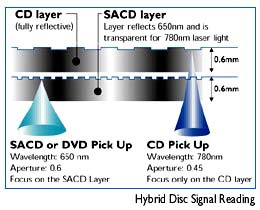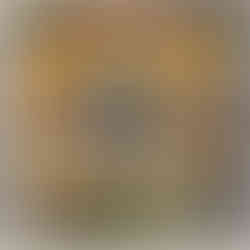WHAT IS DSD
- Alexander aka KUBIK

- Jul 7, 2023
- 4 min read
Updated: Oct 16, 2023
WHAT IS DSD (DIRECT STREAM DIGITAL) AUDIO?
The DSD audio format has been back in fashion for a few years now. Most new digital products (from DACs to music streamers) boast DSD compatibility, and the music catalog is now big enough to command respect, especially if you’re into jazz and classical music.
But what exactly is DSD? And how is it different from the digital signals used in CDs and every other hi-res music format?
[ DSD (DIRECT STREAM DIGITAL) https://www.facebook.com/groups/513381180836550/permalink/610491891125478/ ]
Direct Stream Digital (DSD) is a trademark used by Sony and Philips for their system for digitally encoding audio signals for the Super Audio CD (SACD).
DSD uses delta-sigma modulation a form of pulse-density modulation encoding, a technique to represent audio signals in digital format, a sequence of single-bit values at a sampling rate of 2.8224 MHz. This is 64 times the CD audio sampling rate of 44.1 kHz but with 1-bit samples instead of 16-bit samples. Noise shaping of the 64-times oversampled signal provides low quantization noise and low distortion in the audible bandwidth necessary for high-resolution audio. DSD is a method of storing a delta-sigma signal before applying a decimation process that converts the signal to a PCM signal.
[ PCM (PULSE CODE MODULATION) https://www.facebook.com/groups/513381180836550/permalink/604764411698226/ ]
FIRST, PCM EXPLAINED... What is DSD audio? How it works, where to download files, and more. Digital signals take the form of two states that can be represented by 0s and 1s, but this information needs to be arranged in a specific way to be of any use. In just about every case, the system to organize the digits is known as PCM (Pulse Code Modulation). Let’s have a quick recap of how PCM works before we continue. With PCM, the original analog music waveform is described in two parts. The first is its amplitude (size). In CD this is represented by 16 bits of digital data, which gives us the ability to define 65,536 different signal levels. The original music waveform has to be measured at regular intervals in order for it to be represented properly. The measurement is done 44,100 times a second. While that looks like an arbitrarily large number, it’s chosen quite carefully to ensure that the full frequency range of human hearing (20Hz to 20kHz) is covered. (Take a look at PCM Analog to Digital explanation image below). DSD uses a single bit of information, and all this information tells us is whether the current sample of the analog waveform is higher or lower than in the previous one. Compared with the over 65,000 different values 16-bit PCM has, the two values (0 if the new sample if the signal is lower or 1 if it’s higher) of DSD appear mighty limiting. That resolution shortfall is made up by the very high sampling rate of over 2.8 million times a second – that’s 64 times the speed of a CD. Standard DSD is sometimes called DSD64 for this reason, with double- and quadruple-speed versions called DSD128 and DSD256 respectively. There's even a DSD512 spec. Standard DSD recordings are still relatively rare compared with the PCM alternatives, and those higher-speed versions are extremely niche. DSD fans claim the format is as close to analog as digital gets. If you could look at a DSD digital stream, it’s possible to draw the analog waveform simply by looking at the density of 0s and 1s. The more 0s there are, the lower the waveform goes, and it’s the opposite for ones. Where there is a balance of the two values, we’re at, or close to, the zero signal point.
DSD VS FLAC: AUDIO QUALITY
Summary: Both are lossless, and both are excellently good. Hard to tell the difference for untrained ears. But DSD performs distinctly better in some Jazz and Classical music.
It’s kind of an unexpected fact that the 1-bit audio bit depth of DSD format, considering the juicy details DSD contains. Note that for every 1-bit increase, the accuracy doubles. But you won’t notice any quiet sound loss compared with Audio CD formats – with 16-bit depth which equates to 96 dB of dynamic range.
Why? Well, two factors shall be given thanks to:
The extremely high sample rate – 2.822MHz for DSD64 (64 times of CD sample rate) and the delta-sigma modulation of the DSD recorder.
DSD sample rates (are multiple 44100 Hz, which is the CD sample rate):
DSD 64: DSD 2.8 MHz = 2 822 400 Hz = 44100 Hz x 64 times;
DSD 128: DSD 5.6 MHz = 5 644 800 Hz = 44100 Hz x 128 times;
DSD 256: DSD 11.2 MHz = 11 289 600 Hz = 44100 Hz x 256 times;
DSD 512: DSD 22.6 MHz = 22 579 200 Hz = 44100 Hz x 512 times;
DSD 1024: DSD 45.2 MHz = 45 158 400 Hz = 44100 Hz x 1024 times;
See, 64 to 1024 times of CD sample rate is quite astonishing… However, there’s a fact that it’s actually nearly impossible for “untrained ears”, which, as a matter of fact, covers most of us, to differentiate between two different hi-res & high sample rate lossless audio formats like DSD vs FLAC. But DSD FLAC comparison makes better sense because DSD is interestingly special.
"WHAT IS DSD" Sources:
https://www.facebook.com/.../permalink/624994593008541/
https://www.facebook.com/.../permalink/623196586521675/
https://www.whathifi.com/.../what-dsd-audio-how-it-works... https://www.videoconverterfactory.com/.../dsd-vs-flac...
https://en.wikipedia.org/wiki/Direct_Stream_Digital
All reactions:
3434

















Comments